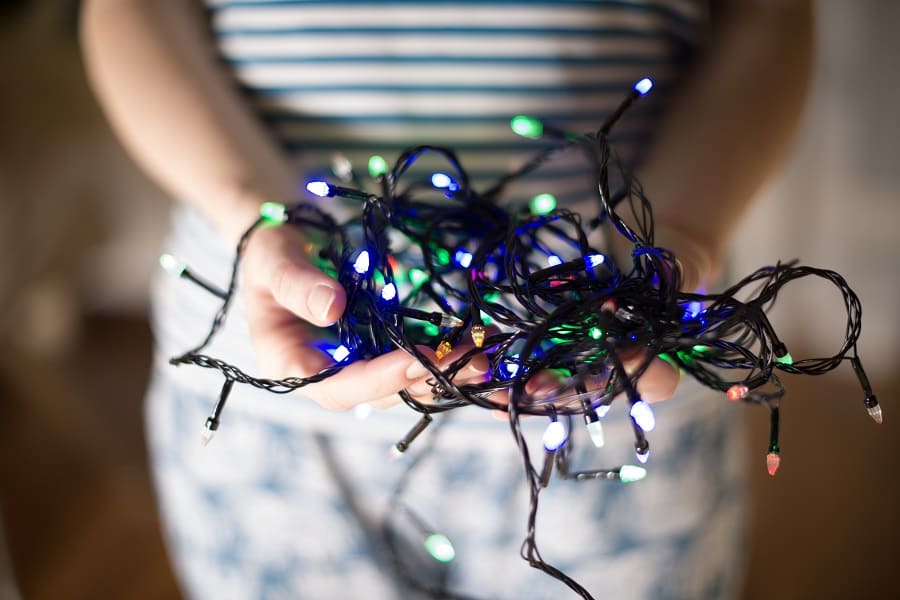
What is the NEC code for Christmas lights?
Decorating the home with Christmas lights is a favorite American tradition. But as with dealing with any electrical component in the home, it’s important to keep safety at the front of our minds. The National Electric Code (NEC) is the leading electrical safety standard in the United States, and provides essential guidelines for all types of electrical installations including Christmas lights.
So, what is the NEC code for Christmas lights?
This article will cover just that, along with why following the set guidelines is important and what can happen if you don’t follow the NEC code for Christmas lights.
Understanding the NEC Code
The NEC is a set of guidelines created by the National Fire Protection Agency (NFPA), and is updated every three years to cover electrical installation matters across homes, commercial buildings, and industrial facilities alike. So, whether you’re installing Christmas lights in residential or commercial environments, it’s imperative that you be aware of the NEC’s guidelines.
Acknowledging and adhering to the NEC is crucial to reduce the risk of electrical accidents and fires, in turn protecting property and more importantly, people.
NEC Code Regarding Christmas Lights
The 2023 NEC, in section 590.3(B) permits the installation of holiday lights for no more than 90 days. This is important to note, since many families like to start putting up Christmas lights as early as possible to get into the holiday spirit.
So keep in mind that if you install Christmas lights in early October, you’ll need to take them down near the New Year to adhere to the NEC’s 90 day requirement.
Guidelines to Follow when Installing Christmas Lights
Here are some key elements that the NEC covers to keep in mind when installing your Christmas lights this season:
Proper Use of Electrical Outlets
One of the most important NEC guidelines is to ensure that you’re using the proper type of outlets for Christmas lights. For example, outdoor lights must be plugged into GFCI (Ground Fault Circuit Interrupter) outlets, which protect against electrical shock in damp or wet conditions. GFCI outlets will shut off the electrical circuit if they detect an imbalance in the electrical current, preventing potential hazards like shocks or electrocution.
Avoiding Overloading Circuits
Another important aspect of the NEC code is the regulation around circuit loading. Many people make the mistake of plugging too many strings of lights into a single outlet, overloading the circuit and increasing the risk of fire. The NEC recommends that circuits not be loaded beyond 80% of their capacity. For most home circuits, this means plugging in no more than three or four strands of lights to a single outlet, depending on their wattage.
Using Weatherproof Equipment for Outdoor Installations
When installing Christmas lights outdoors, the NEC requires the use of weatherproof equipment. This includes everything from the light strings themselves to extension cords and electrical connections. Outdoor lights should be rated for wet conditions, ensuring they can withstand rain, snow, and freezing temperatures. Similarly, outdoor-rated extension cords must be used to prevent moisture from causing electrical shorts or failures.
Securing Light Strings Properly
The NEC also emphasizes the importance of securely mounting light strings. Christmas lights should not be pinched, pulled, or secured in ways that could damage the cords, such as stapling them to surfaces. Damaged cords are a major cause of electrical fires during the holiday season. The NEC recommends using proper mounting clips designed for holiday lights, which help avoid fraying or cutting the wires.
Grounding and Protection Against Electrical Shock
For outdoor light installations, proper grounding is essential. The NEC code specifies that all outdoor light fixtures and decorations should be grounded to reduce the risk of electrical shock. Grounded extension cords should always be used with outdoor lights to meet this requirement.
Potential Consequences of Not Following the NEC Code
Failing to follow the NEC code when installing Christmas lights can lead to a variety of dangerous situations. Here are some of the potential risks:
Electrical Fires
The most serious of consequences is increased risk of electrical fires. Overloading circuits, using faulty or damaged lights, or misusing Christmas lights can all lead to very dangerous electrical fires.
Electrical Shocks
Less serious than fires, but still very dangerous are electrical shocks. Without proper grounding and the use of GFCI outlets, there’s a heightened risk of electrical shock, especially with outdoor installations. If moisture gets into a non-weatherproof light or cord, touching it could lead to a severe shock or even electrocution.
Damage to Electrical Equipment
Improper installation of Christmas lights, such as overloading a circuit or using inappropriate cords, can cause permanent damage to your electrical system. Overloaded circuits can blow fuses or damage breakers, leading to costly repairs or replacements.
Voided Insurance Claims
If an electrical fire or shock occurs due to improper Christmas light installation, you could face issues with your insurance company. Homeowners’ insurance policies often require compliance with local electrical codes. If it’s determined that a fire or injury occurred due to code violations, your insurance may not cover the damages.
Conclusion
The NEC code provides important guidelines to help homeowners safely install and enjoy their Christmas lights. By understanding and following these electrical safety standards, you can reduce the risk of electrical fires, shocks, and equipment damage, ensuring that your holiday season is as joyful and safe as possible.
